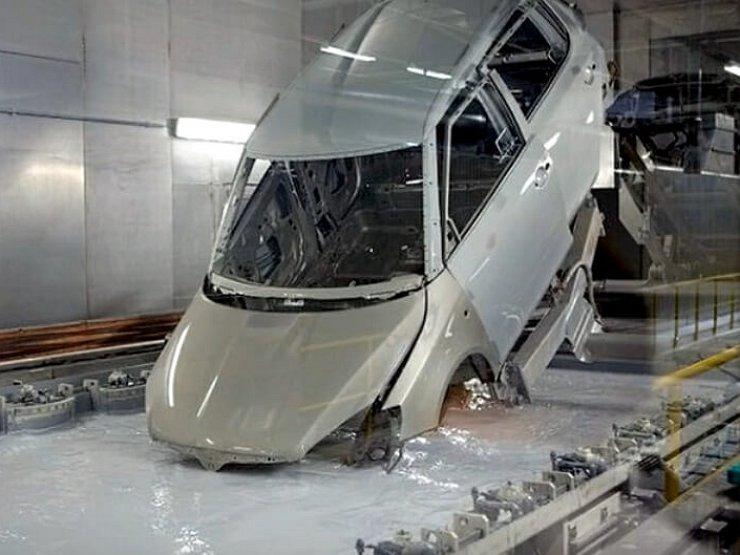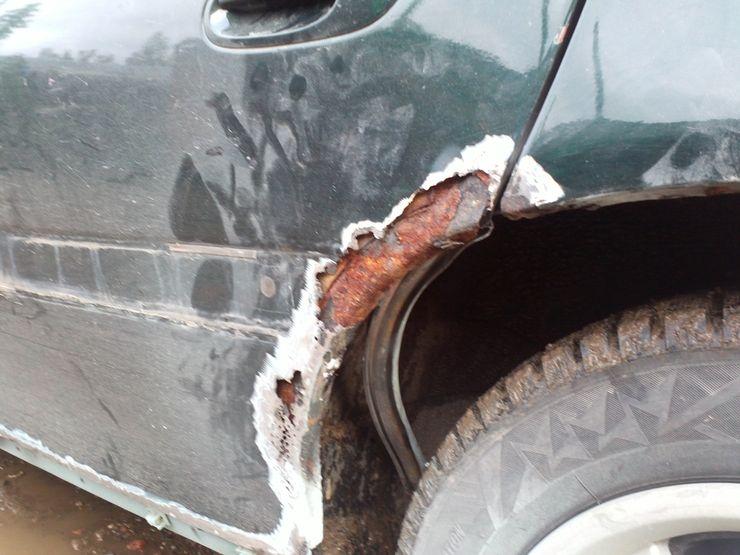
The main mistakes when galvanizing a car body on your own
Galvanization of a car body is the most effective technology for combating corrosion, which makes it possible to operate a car in the most adverse conditions with virtually no consequences. True, it is very expensive. It is not surprising, therefore, that the owners of used cars, especially those that have already "bloomed", prefer to carry out this procedure on their own. But usually without much success. Why, and how to properly galvanize a car at home, the AvtoVzglyad portal figured out.
With self-body repair, a caring driver prefers to cover bare metal with something before painting. And the choice, as a rule, falls on "something with zinc." However, few people know that there are very few special compositions for real galvanizing on the market today. In stores, the car owner is most often sold primers with supposedly zinc, and incredible rust converters to zinc. All this has little to do with real galvanizing.
WRONG WORDS…
So, a sprawling “bug” of rust has appeared on your car. In the case of used cars, the situation is frequent, especially in the area of thresholds and wheel arches. Usually these places are simply cleaned of loose rust, moistened with some kind of converter, primer and paint are applied. For a while everything is fine, and then the rust comes out again. How so? After all, in the preparation they used a rust-to-zinc converter! At least that's what it says on the label.
In fact, all such preparations are made on the basis of orthophosphoric acid and the maximum that such a composition can do is phosphate the surface, and this will be porous phosphating, which will rust in the future. The resulting film cannot be used as an independent protection - only for painting. Accordingly, if the paint is of poor quality, or simply peeled off, this layer will not protect against corrosion.

WHAT TO CHOOSE?
On the shelves of our stores there are also real compositions for self-galvanizing, and there are two types - for cold galvanizing (this process is also called galvanizing) and for galvanic galvanizing (they usually come with both an electrolyte and an anode), but they cost an order of magnitude more expensive than converters. We do not take cold galvanizing into account, it was originally invented for coating metal structures, it is unstable to organic solvents and mechanical damage. We are interested in the galvanic method of applying zinc, while everything necessary for this process can be done at home. So, will it be needed in order to galvanize the body area?
Before proceeding, you should remember to observe safety precautions when working with reagents: use a respiratory mask, rubber gloves, goggles, and carry out all manipulations outdoors or in a well-ventilated area.
PLUS BOILING WATER
Stage one. Metal preparation. The steel surface must be completely free of rust and paint. Zinc does not fall on rust, and even more so on paint. We use sandpaper or special nozzles on a drill. It is easiest to boil a small-sized part in a 10% (100 grams of acid per 900 ml of water) solution of citric acid until the rust is completely destroyed. Then degrease the surface.
Stage two. Preparation of electrolyte and anode. Galvanic galvanizing process is as follows. In an electrolyte solution (the electrolyte serves as a conductor of the substance), the zinc anode (that is, plus) transfers zinc to the cathode (that is, minus). There are many electrolyte recipes floating around the web. The simplest is to use hydrochloric acid, in which zinc is dissolved.

Acid can be bought at a chemical reagent store, or at a hardware store. Zinc - in the same chemical store, or purchase ordinary salt batteries and remove the case from them - it is made of zinc. Zinc must be dissolved until it stops reacting. In this case, gas is released, so all manipulations, we repeat, must be carried out on the street or in a well-ventilated area.
The electrolyte is made more complicated in this way - in 62 milliliters of water we dissolve 12 grams of zinc chloride, 23 grams of potassium chloride and 3 grams of boric acid. If more electrolyte is needed, the ingredients should be increased proportionately. It is easiest to get such reagents in a special store.
SLOW AND SAD
Stage three. We have a fully prepared surface - a cleaned and degreased metal, an anode in the form of a zinc case from a battery, an electrolyte. We wrap the anode with a cotton pad, or cotton wool, or gauze folded in several layers. Connect the anode to the plus of the car battery through a wire of suitable length, and the minus to the car body. Dip the cotton wool on the anode into the electrolyte so that it is saturated. Now, with slow movements, we begin to drive on bare metal. It should have a gray finish on it.

WHERE IS THE MISTAKE?
If the coating is dark (and therefore brittle and porous), then either you drive the anode slowly, or the current density is too high (in this case, take the minus away from the battery), or the electrolyte has dried up on the cotton wool. A uniform gray coating should not be scraped off with a fingernail. The thickness of the coating will have to be adjusted by eye. In this way, up to 15-20 µm coatings can be applied. The rate of its destruction is approximately 6 microns per year upon contact with the external environment.
In the case of a part, it needs to prepare a bath (plastic or glass) with an electrolyte. The process is the same - plus for the zinc anode, minus for the spare part. The anode and the spare part should be placed in the electrolyte so that they do not touch each other. Then just watch for zinc precipitation.
After you have applied zinc, it is necessary to rinse the place of zincing well with water to remove all electrolyte. It will not be superfluous to degrease the surface again before painting. In this way, parts or bodywork can be extended life. Even with the destruction of the outer layer of paint and primer, zinc will not quickly rust the treated metal.
